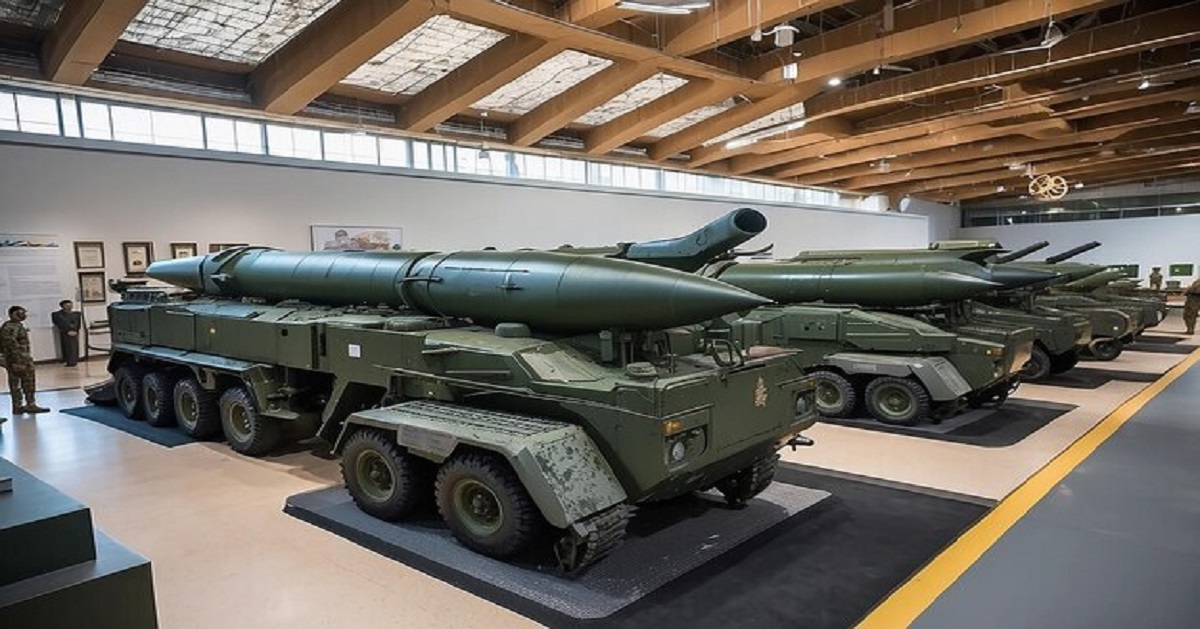On the night of 13/14 April 2024 Iran launched an unprecedented 170 drones, 30 cruise missiles and 120-130 ballistic missiles against Israel. Iran stated that bombardment was in response to the 01 April 2024 air strike on the Iranian consulate building in the Syrian capital Damascus, which killed thirteen people including Brig Gen Mohammad Reza Zahedi, and was a violation of its sovereignty. The consulate attack had followed a pattern of air strikes against Iranian targets widely attributed to Israel.
Israeli Prime Minister Benjamin Netanyahu assessed the situation thus, "We blocked. We intercepted, together we will win." The Israeli War Cabinet met repeatedly and reviewed military plans for a potential response! Though globally there have been calls for restraint after the Iranian strike, the situation escalated, with Israel striking Isfahan in Iran on 18 April 2024. Most importantly, this was the first direct attack by Iran targeting of Israel, and by Israel against Iran. The spectre of escalation loomed ahead, which could engulf the entire region.
There is need to analyse the weapon systems utilised, tactics employed and targets for a strategic evaluation in five parts. First, at the outset it is essential to recount that Iranian Foreign Minister Hossein Amir Abdollahian stated that Iran had given neighbouring countries (Turkey, Jordan and Iraq) and the US, 72 hours’ notice before the attack, and that the ‘response was legitimate and definitive!’ Though the US has stated that it received no warning, it is unlikely that old-standing allies Turkey and Jordan obviated in informing. Iran also took 12 days after its Embassy in Syria was targeted, which allowed sufficient time to prepare for the Iranian attack. In any case the Iranian offensive systems had to fly 1700km and transit the airspace of Iraq, Syria and Jordan towards Israel, allowing credible opportunities to defend.
Second, Iran utilised slowest moving drones, followed by slow cruise missiles, and lastly the supersonic ballistic missiles, to coincide the time on target. With the sophisticated surveillance systems, the offensive package was well tracked from Iran, onwards to Israel. With the defensive preparations well underway, 170 odd drones and 30 cruise missiles were not able to penetrate Israeli air space and were pre-emptively destroyed.
Of the Medium Range Ballistic Missiles (MRBM) of Iran (Kheiber Shekan, Emad and Ghadr1) only 9 or 10 were able to hit Israel, that led to over 30 injured. Simultaneous with the offensive package launched by Iran, Hezbollah from Lebanon fired about 70 rockets and Houthis from Yemen fired a ballistic missile, which also tended to saturate the defensive systems. The Wall Street Journal in an article had stated that 50% of the Iranian ballistic missiles failed to launch or crashed before reaching the targets. It is important here to note that Iran has reportedly over 3000 ballistic missiles, though it had employed only about 130! It is estimated that the entire offensive package would have cost Iran about $1 Million, while the defensive missiles used by Israel, Jordan, the US and UK would have costed approximately $1.25 billion.
Third, Israel used its famous Iron Dome, the bedrock of its short-range air defence largely against rockets. In case of Iron Dome, its missiles do not hit the incoming rockets, but resort to proximity detonations. The David’s Sling has a longer range and uses hit to kill against incoming cruise and ballistic missiles. The Arrow2/3 is a higher altitude missile system that intercepts ballistic missiles. This might have been the first time that an incoming ballistic missile was destroyed in exo-atmosphere. In addition, the US destroyed 80 one-way attack uncrewed aerial vehicles and six ballistic missiles. The Iranian ballistic missiles that landed in Israel were in the proximity of an air base.
Four, Israel retaliated on 18 April 2024 with probably three air to ground missiles, likely launched from stealth F35 warplanes. There were also some quadcopters as reported by Iran, most likely to confuse or divert attention of the defensive systems. The F35 aircraft would have crossed the airspace of Jordan and resorted to stand-off firing while in Iraqi airspace. The target selected by Israel was Isfahan close to Natanz nuclear facility. It is likely that anti-radiation missiles targeted Iranian S300 Air Defence system radars. The attack was calibrated to show Israel’s capability to dodge Iran’s air defences. There was some damage to Isfahan airbase too. Israel has the most advanced missile capabilities in West Asia, the attack could have been more damaging!
Five, the spectre of Iran-Israel nuclear war has risen again. 'Al Jazeera' has reported that the Islamic Revolutionary Guard Corps has said that it could attack Israel’s nuclear sites and pursue a nuclear weapon if the country strikes at its nuclear facilities. Israel’s nuclear weapons are a fait accompli. It is presumed that Israel possesses nuclear weapons since the 1960s, may be up to 400 warheads, despite the opacity and strategic ambiguity. Iran, meanwhile, does not possess nuclear weapons. The latest quarterly IAEA safeguards report on Iran’s compliance with the Nuclear Non-Proliferation Treaty (NPT) draws attention to Iran’s non-compliance with its comprehensive safeguards’ agreement. IAEA opines that Iran now has highly enriched uranium that could be converted to weapons-grade fuel for at least three bombs in short time and the delivery means over a longer period.
Iran still states it has no plans to make nuclear weapons. Iran’s supreme leader, Ayatollah Ali Khamenei, had issued a fatwa against nuclear weapons in 2003 and repeated the same in June 2023 speech, declaring weapons of mass destruction to be “contradictory to Islam.” Iranian officials frequently accuse Western governments of hypocrisy on Iran’s nuclear programme, by not subjecting Israel to IAEA oversight. Whether Iran may or may not make a nuclear bomb is unclear. In any case the nations well appreciate the catastrophe that nuclear weapons can cause, and the spill over effects over the region at large! The nuclear spectre in West Asia may, hence, be exaggerated.
The Iranian drone-missile package launched on 13/14 April 2024 clearly indicated that it was a limited strike with adequate warning, to dissuade a massive response. It was obvious that the slow-moving drones that would take five to six hours or the cruise missiles about two hours in flight, would be destroyed even before reaching Israel. The strike was not open-ended and followed up post Israeli strike on 18 April. Similarly, the Israel’s response against Iran was minimal and not majorly damaging. Larger messaging seemed to reflect own respective nationalist constituencies and to the adversaries that capabilities exist to enlarge the conflict. It can well be stated that the exchange of missiles between the two belligerents was with clear plan for escalation control.
A Trend in Future Warfare for India
For some time, there has been a trend that Russian military has been firing packages of cruise, ballistic missiles, Shahed-type drones and long-range artillery simultaneously at targets across Ukraine. It is also apparent that a significant percentage of drones and ballistic missiles could not be downed by Ukrainian Air Defence systems, and hit their preplanned targets. This is despite the modern Air Defence systems supplied by the US and NATO to Ukraine. Similarly, Ukraine has been successfully targeting with drones a number of Russian oil refineries in 2024, despite counter-drone systems employed by Russia.
It is hence apparent that Iran’s weapon package of variety of drones, cruise and ballistic missiles targeting Israel on 13/14 April 2024 is becoming a kind of template, to saturate and confuse the air defence systems, to make them relatively ineffective. To this must be cumulated the utilisation of stealth fighters at stand-off ranges, even over neutral countries avoiding radar coverage and precisely targeting. There is also the long-range precision artillery (like HIMARS/ATACMS of the US or PCL 191 MBRL of China) being utilised. The threat seems greatly elevated, in that it required the immense conjoined potential of the US and UK in the Middle East, of Israel and Jordan to obtain effective ‘kills’ of the hundreds of incoming hazards.
It must however, be noted that Iranian weapon package of about 330 offensive systems was against Israel of an area of 450km by 100km, and hence it was largely destroyed in flight itself. For larger nations, such weapon packages will require different capabilities, sizes, calibre, ingenuity and innovation to be effective, and similarly defensive systems to execute a worthwhile denial.
The future of long-range precise targeting as exemplified in Ukraine and Iran-Israel, demands a complete and constant appraisal. This can be considered in five-fold examination. First are the structural issues, in which the defensive and offensive systems are organic to and hence employable by the Services. This disaggregation cannot hold good for the newer trends in warfare, and will be inimical to creating the right synergy. It is not important to redrag the much-debated issue of ‘Theatrisation’ however, the operational plans for long term precise targeting, defensively and offensively, MUST be synergised based upon clear doctrine, threat and offensive efficacy, and logistic resilience. Such structural transformation is clearly within ambit of the Services themselves, and cannot be ascribed to political decision making.
Second, Indian defensive air defence capabilities range from developing ballistic missile defence (BMD) capabilities to intercept long-range missiles to deploying the S-400 air defence missile systems and fielding medium-range surface-to-air missile (MRSAM) systems. The Indian armed forces have a variety of systems capable of destroying aerial threats at different ranges.
India has to make very significant advances in developing multi-layered endo-atmospheric and exo-atmospheric intercept systems to destroy large number of incoming hostile cruise and ballistic missiles within and outside the atmospheric limits. India has to soonest enhance the terrestrial air defence capabilities by synergising sophisticated sensors capable of detection of stealth and small radar cross section targets. A significant upgradation will be developing an indigenous Ballistic Missile defence, S-400 air defence systems and medium-range surface-to-air missile systems (like Akash and Samar) are steps in the right direction. Additionally required are man-portable very short-range air defence system (VSHORADS), to handle low altitude aerial threats.
In early April, the Indian Army began the induction of the indigenous Akashteer system to boost its air defence capabilities. The automated air defence control and reporting system will allow the army’s air defence units to operate in an integrated manner. This has to become seamless with the Air Force command and control mechanism. Basically, a joint robust, dynamic air defence architecture is critical, in a much-accelerated conceptualisation of the design, development and production.
Third, India also needs close-in-weapon-systems, for both soft and hard kill against low-flying, low-signature aerial threats, including UAVs. The threat of disposable, one-way drones or quadcopters to the forward edge of battle area (FEBA) has greatly intensified. Many of these systems, again for hard and soft kill, will have to be tailored for infantry, mechanised and artillery units, and logistics area as they cannot fall into a larger air defence umbrella. This will entail a philosophical change in air defence and electronic warfare management at Forward Edge of Battle Area (FEBA), a disaggregation that might find internal opposition that would require warding off!
Four, India too needs to commence thinking about the unthinkable, the threat of battlefield or tactical nuclear weapons. Indeed, the mention of nuclear weapons in Ukraine-Russia War and currently Iran-Israel one, are ominous. Under-Secretary-General and High Representative for Disarmament Affairs Izumi Nakamitsu, had in 2023, issued a warning that the risk of a nuclear weapon being used, whether intentionally or by mistake, is currently higher than it has been at any point since the height of the cold war!
Understandably, the nuclear nations states are rational actors in the global environment, and fully fathom the catastrophe that these can bring about. Pakistan, however, has been constantly, internationally, badgering India of tactical nuclear weapon threat against Indian conventional superiority. These threats may emanate from political or military bigwigs, but are invariably addressed to the political hierarchy! While the likelihood of nuclear exchange may not be too high, contemplation will demand the political considerations towards military conventional plans and linkages with nuclear threat.
Five, political considerations are necessary for three additional issues, establishment of schema and thought-processes for escalation control, resilience against a significant drone-cruise-ballistic missile onslaught and use of neutral air space by adversaries – with or without their knowledge (utilising stealth systems). These are issues however, for separate examination.
In sum, it is must also be stated that the aerial offensive may not be isolated from other domains of warfare, be it land, maritime, space, cyber, informational and cognitive. The recent wars, however highlighted the strength of the kineticism brought about by the stand-off nature of this aerial consolidated threat.
(The paper is the author’s individual scholastic articulation. The author certifies that the article/paper is original in content, unpublished and it has not been submitted for publication/web upload elsewhere, and that the facts and figures quoted are duly referenced, as needed, and are believed to be correct). (The paper does not necessarily represent the organisational stance... More >>
Image Source: https://img.freepik.com/premium-photo/tehran-september-9-2019-military-museum-offensive-missiles-armed-forces-islamic-republic-iran_999327-58243.jpg










Post new comment